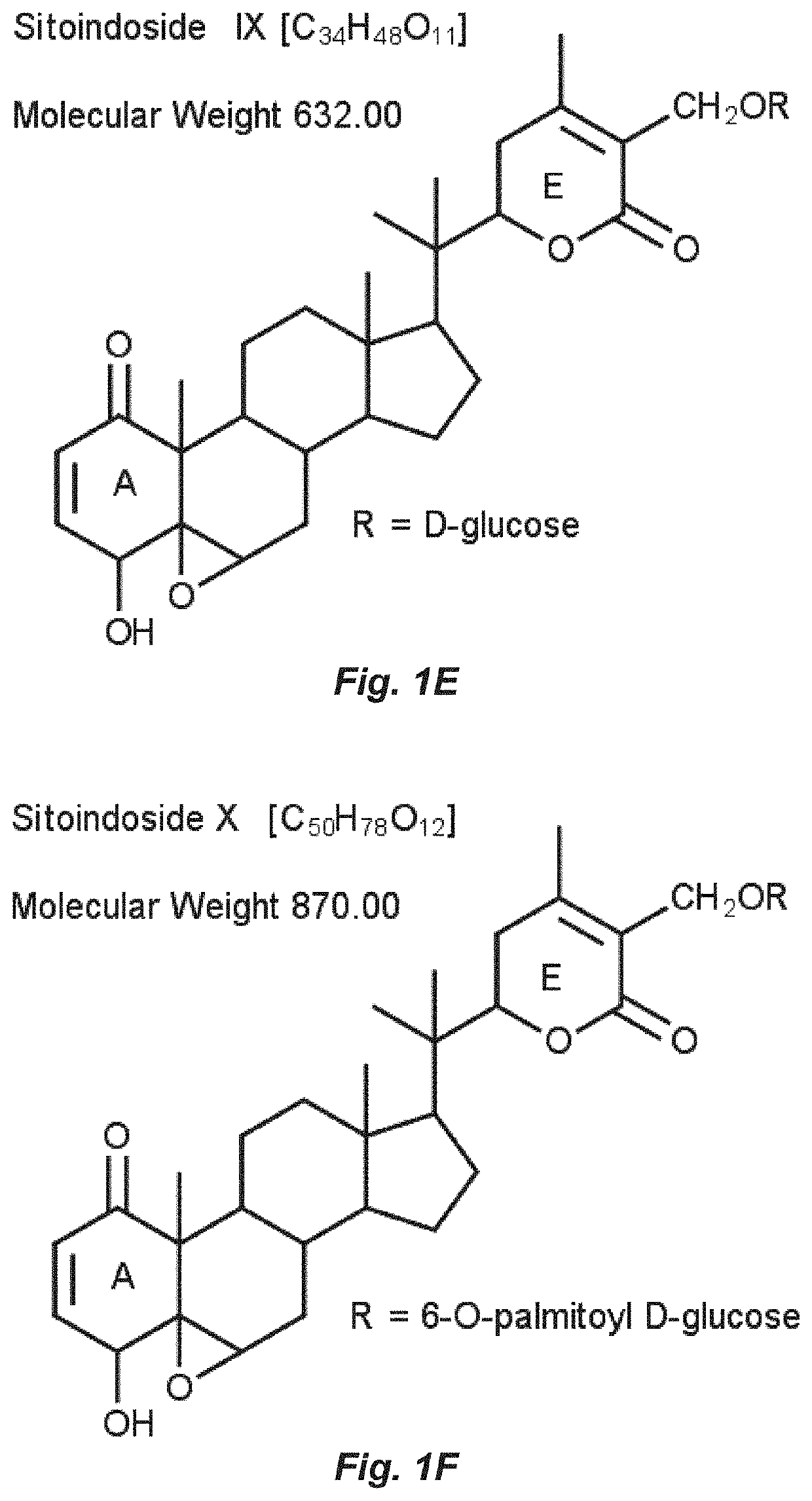Methods and compositions for treating schizophrenia and schizoaffective disorders
a technology for applied in the field of methods and compositions for treating schizophrenia and schizoaffective disorders, can solve the problems of not helping much if, not helping significantly with general symptoms, and loss of motivation, and achieve the effect of improving the negative symptom of the psychiatric disorder
- Summary
- Abstract
- Description
- Claims
- Application Information
AI Technical Summary
Benefits of technology
Problems solved by technology
Method used
Image
Examples
example 1
[0049]A randomized, double-blind, placebo controlled study was performed based on a total of 66 patients with Schizophrenia or Schizoaffective Disorder who were experiencing an exacerbation of symptoms, and the efficacy data is based on n=33 subjects who received the Standardized extract of W. somnifera—SENSORIL® n=33, and n=33 who received placebo, the treatment was provided for 12 weeks. The dosage of SENSORIL®—Standardized Extract of W. somnifera was titrated from 500 mg / day for the first week to 1000 mg / day for the balance of the study.
[0050]The dosage of the Standardized Extract of W. somnifera—SENSORIL® was adjusted as follows: 250 mg by mouth twice daily (i.e., total daily dosage of 500 mg / day) for one week, and then increased to 500 mg by mouth twice daily (i.e., total daily dosage of 1000 mg / day) for the balance of the study, i.e., 11 weeks. The capsules were taken with water or juice and patients were advised to take it with food and not on an empty stomach.
[0051]Positive,...
example 2
nd Cognitive Effects of WSE Administration to Patients with Schizophrenia
[0085]As shown below, standardized extract of W. somnifera, when added to standard doses of marketed antipsychotic medications, improves event related brain potentials, specifically: mismatch negativity, P300, and gammaband, in addition to negative symptoms in persons with schizophrenia or schizoaffective disorder.
[0086]In the present example (n=11 subjects taken from the group of 66 patients of Example 1), some of the MMN deficit was recovered in persons with schizophrenia that were treated with WSE added to a standard anti-psychotic agent, compared to those subjects who received placebo, and the size of the WSE treatment effect for recovery of MMN was large (d=1.28). Furthermore this WSE treated group improved their negative symptoms scores significantly compared to those receiving placebo. Additionally, the WSE-treated group also improved on two other cortical neurophysiological deficits compared to the plac...
PUM
| Property | Measurement | Unit |
|---|---|---|
| Mw | aaaaa | aaaaa |
| stimulation frequency | aaaaa | aaaaa |
| temperature | aaaaa | aaaaa |
Abstract
Description
Claims
Application Information
 Login to View More
Login to View More - R&D
- Intellectual Property
- Life Sciences
- Materials
- Tech Scout
- Unparalleled Data Quality
- Higher Quality Content
- 60% Fewer Hallucinations
Browse by: Latest US Patents, China's latest patents, Technical Efficacy Thesaurus, Application Domain, Technology Topic, Popular Technical Reports.
© 2025 PatSnap. All rights reserved.Legal|Privacy policy|Modern Slavery Act Transparency Statement|Sitemap|About US| Contact US: help@patsnap.com



